Walmart halts H-1B visa offers amid Trump’s $100,000 fee increase - Bloomberg
Introduction & Market Context
Grupo Aeroportuario del Centro Norte (NASDAQ:OMAB), known as OMA, recently presented its Q2 2025 corporate overview, highlighting strong passenger growth and ongoing expansion projects. The Mexican airport operator, which manages 13 airports across Mexico, reported serving 27.8 million passengers in the last twelve months ending June 2025, demonstrating continued recovery and growth beyond pre-pandemic levels.
The company’s stock has shown remarkable long-term performance, delivering an 892% return since its IPO in 2006, significantly outperforming the Mexican Stock Exchange’s MEXBOL Index, which returned 136% during the same period. This performance reflects OMA’s consistent operational execution and strategic positioning in the growing Mexican air travel market.
As shown in the following chart of OMA’s stock performance relative to the MEXBOL Index:

Quarterly Performance Highlights
OMA’s Q2 2025 results exceeded revenue expectations by 15.08%, reaching 4.35 billion pesos against forecasts of 3.78 billion pesos. This performance was driven by strong passenger traffic, which increased by 10.3% in the first half of 2025 compared to the same period in 2024. International passenger growth was particularly robust at 17.0%, outpacing domestic growth of 9.1%.
The company’s passenger traffic breakdown shows the monthly progression of both domestic and international travel in the first half of 2025:
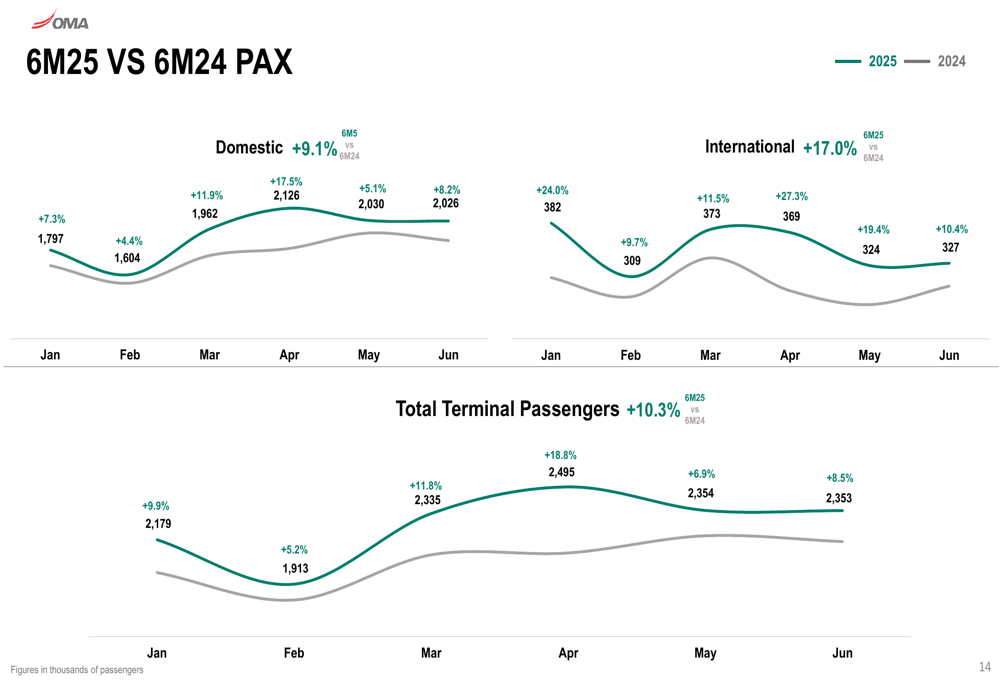
Revenue growth remained solid across both aeronautical and non-aeronautical segments. Aeronautical revenue reached 9,795 million pesos for the last twelve months ending June 2025, representing a 7.2% increase compared to 2024. The company has maintained a steady increase in aeronautical revenue per passenger, reaching 353 pesos in the LTM June 2025 period.
The following chart illustrates OMA’s aeronautical revenue growth trajectory:
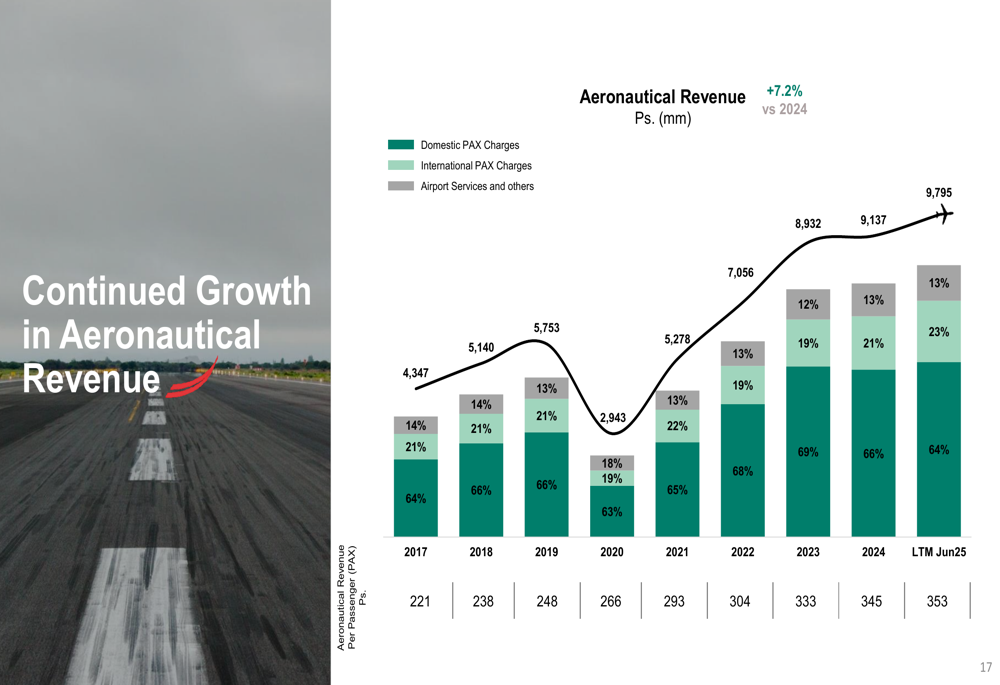
Non-aeronautical revenue showed even stronger growth, increasing by 8.5% to 3,338 million pesos in the LTM June 2025 period. This growth reflects OMA’s successful commercial strategy and diversification efforts, with commercial activities accounting for 87% of non-aeronautical revenue and diversification initiatives contributing 13%.
The breakdown of non-aeronautical revenue performance is shown below:
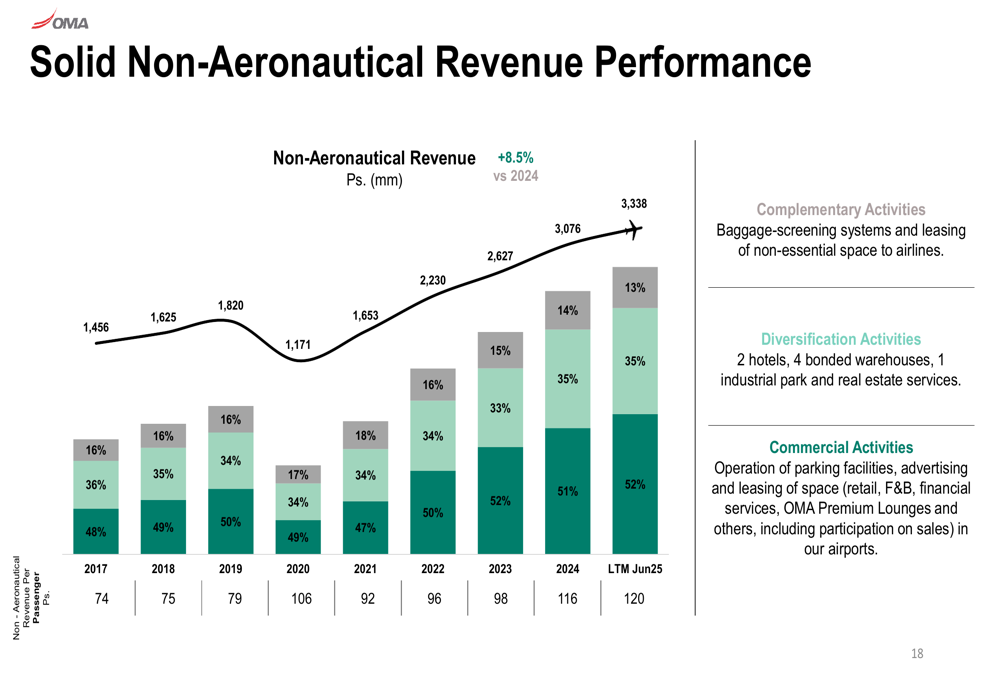
Despite the strong revenue performance, OMA’s earnings per share came in at 27.47 pesos, missing forecasts by 5.08%. However, the company maintained a robust adjusted EBITDA margin of 74.7% for the LTM June 2025 period, demonstrating effective cost management and operational efficiency.
Strategic Initiatives
OMA’s strategic focus remains centered on its Master Development Program (MDP) for 2021-2025, with total committed investments of 15,993 million pesos. The program allocates investments based on passenger contribution, with Monterrey Airport receiving the largest share at 53%, followed by Culiacán and Ciudad Juárez at 9% each.
The company’s investment priorities are illustrated in the following breakdown:
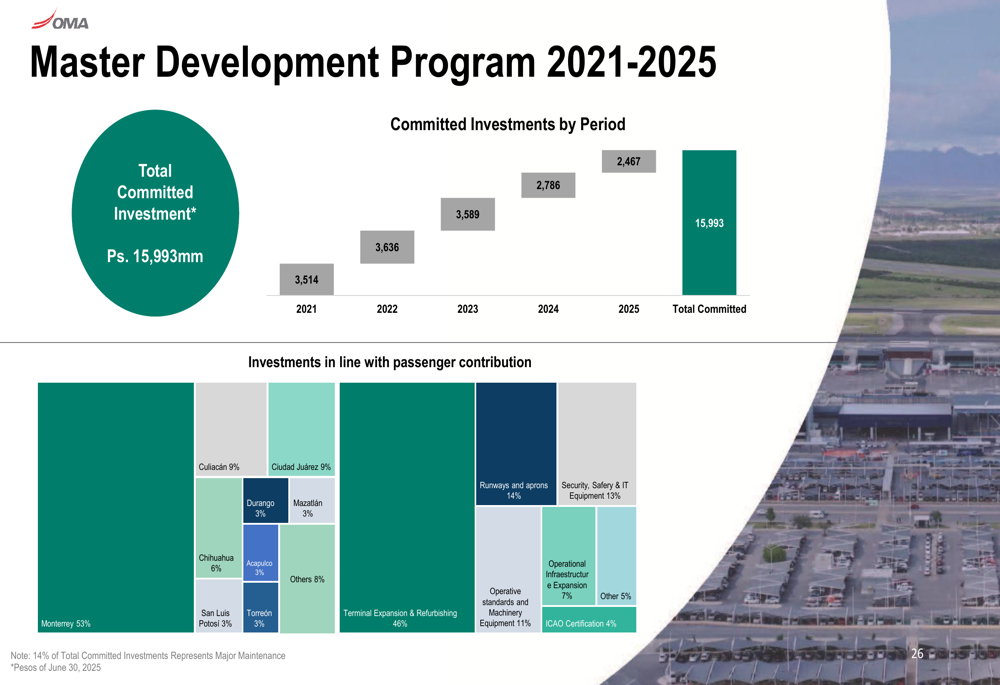
The expansion of Terminal A at Monterrey Airport represents a flagship project within the MDP. Phase 2 of this expansion, scheduled for completion in autumn 2026, will increase Terminal A’s capacity from 5.9 million to 12.5 million passengers annually. The project will expand the terminal building by 11% and increase commercial spaces by 46%, enhancing both operational capacity and revenue potential.
The Monterrey Airport expansion plan is visualized below:
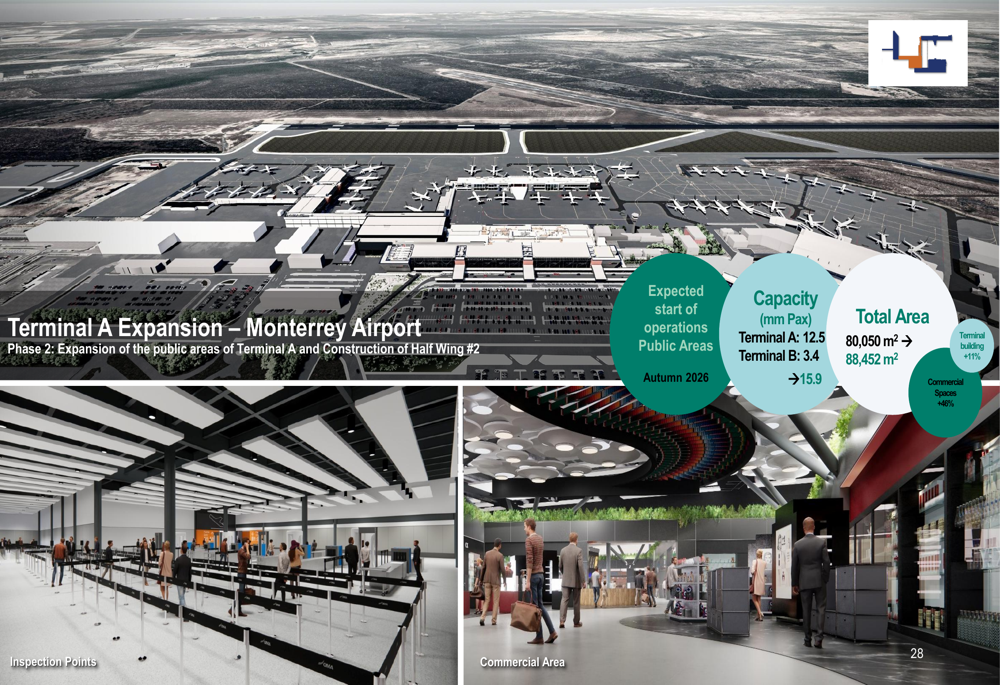
OMA’s value creation strategy is built on five key pillars: fostering passenger traffic and connectivity, maximizing commercial revenues, diversifying revenue streams, implementing a sound financial strategy, and driving operational efficiencies. This comprehensive approach aims to deliver sustainable growth and shareholder value.
The company’s strategic framework is outlined as follows:
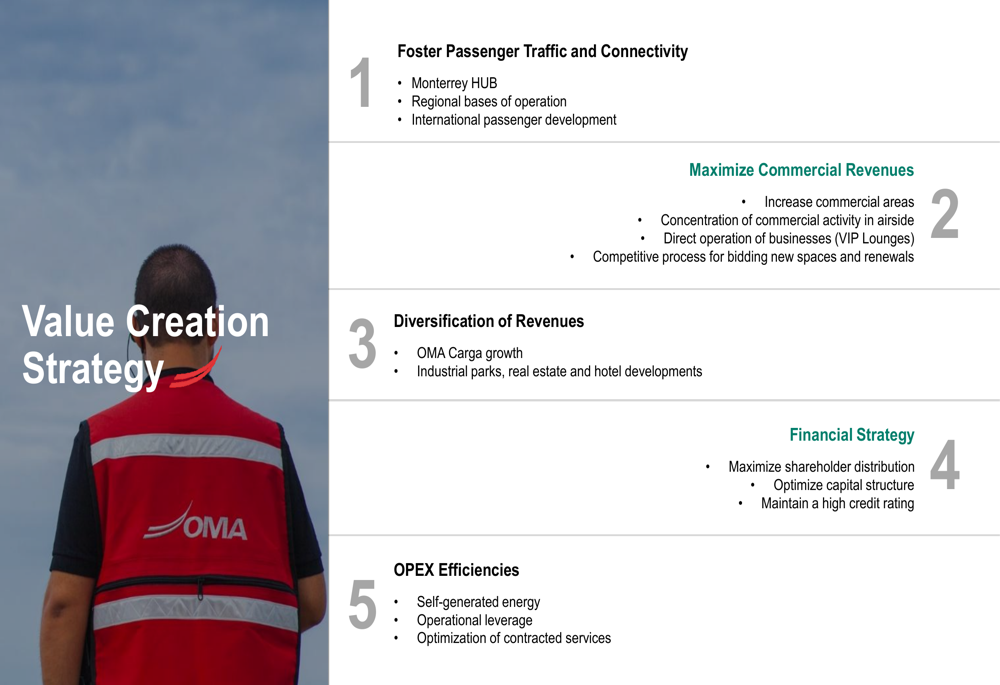
Financial Analysis
OMA has maintained a strong financial position while delivering attractive returns to shareholders. The company’s adjusted EBITDA margin expanded from 66.0% in 2017 to 74.7% in the LTM June 2025 period, representing an improvement of more than 8 percentage points. This margin expansion has been achieved through operational efficiencies and revenue growth.
The company’s revenue and efficiency metrics are illustrated in the following chart:
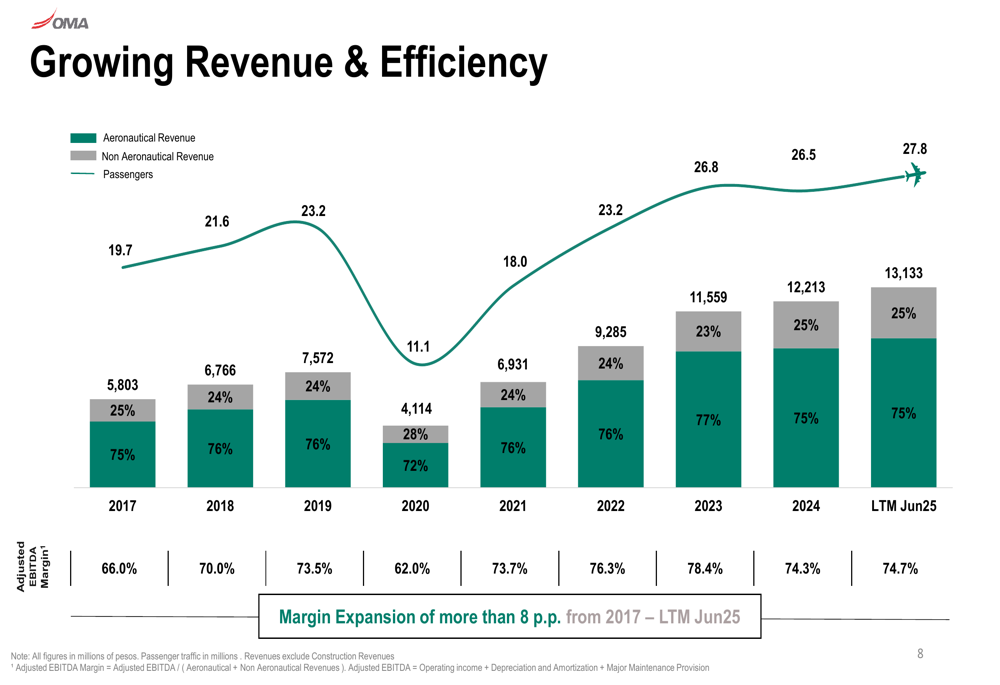
OMA’s commercial revenue is well-diversified across multiple segments, with parking (28%), restaurants (20%), and car rentals (15%) representing the largest contributors. The company directly operates 19 VIP lounges under the OMA Premium Lounge brand, which account for 11% of commercial revenue. This diversification helps mitigate risks associated with any single revenue stream.
In terms of airline partners, Viva Aerobus dominates with 50% of total passenger share, followed by Volaris (23%) and Grupo Aeroméxico (17%). International passenger traffic shows a more balanced distribution, with Viva Aerobus (26%), American Airlines (23%), and United Airlines (13%) as the top carriers.
Forward-Looking Statements
Looking ahead, OMA projects mid to high single-digit traffic growth for the remainder of 2025, consistent with the guidance provided in its earnings call. The company’s growth strategy leverages Mexico’s favorable demographics and relatively low air travel penetration compared to other countries in the region.
CEO Ricardo Dueñas emphasized during the earnings call: "We anticipate for the rest of the year to be in the mid to high single-digit traffic growth." This outlook is supported by ongoing investments in infrastructure and commercial initiatives.
The company highlighted several key investment reasons that underpin its future prospects:
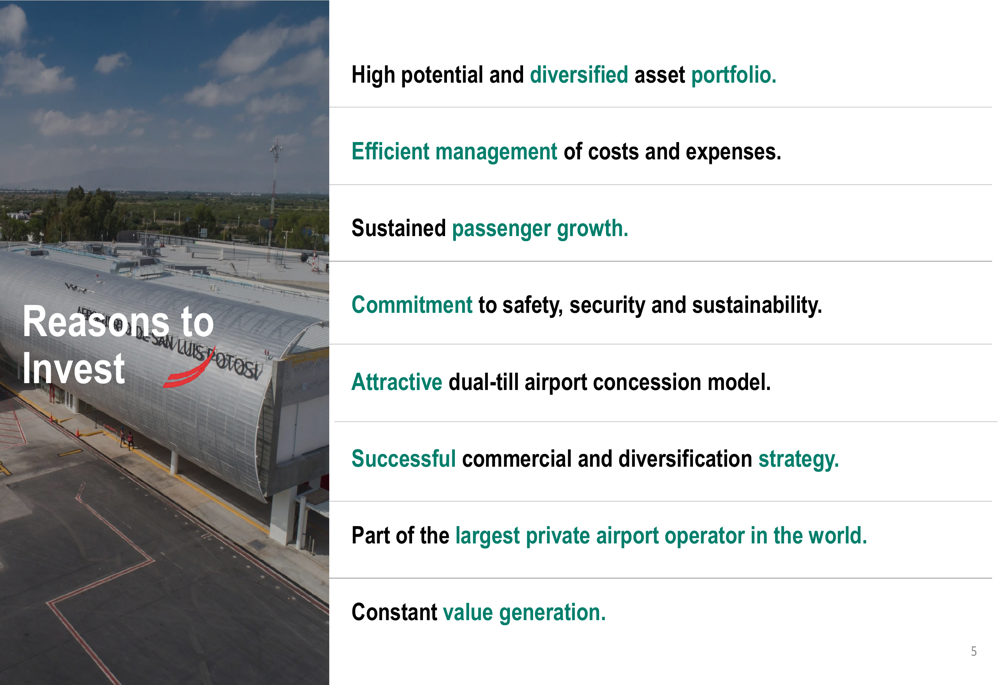
OMA’s ESG initiatives also form an important part of its forward strategy, with targets including a 58% reduction in Scope 1&2 emissions per passenger by 2025 and achieving net-zero emissions by 2050. The company has already made significant progress, with 2024 emissions 91% below the 2018 baseline and 72% below the 2030 goal.
The completion of major infrastructure projects, particularly at Monterrey Airport, is expected to drive future growth by increasing capacity and enhancing the passenger experience. With 53% of the Master Development Program investments allocated to Monterrey, this hub will continue to be a key focus for OMA’s expansion strategy.
Full presentation:
This article was generated with the support of AI and reviewed by an editor. For more information see our T&C.
